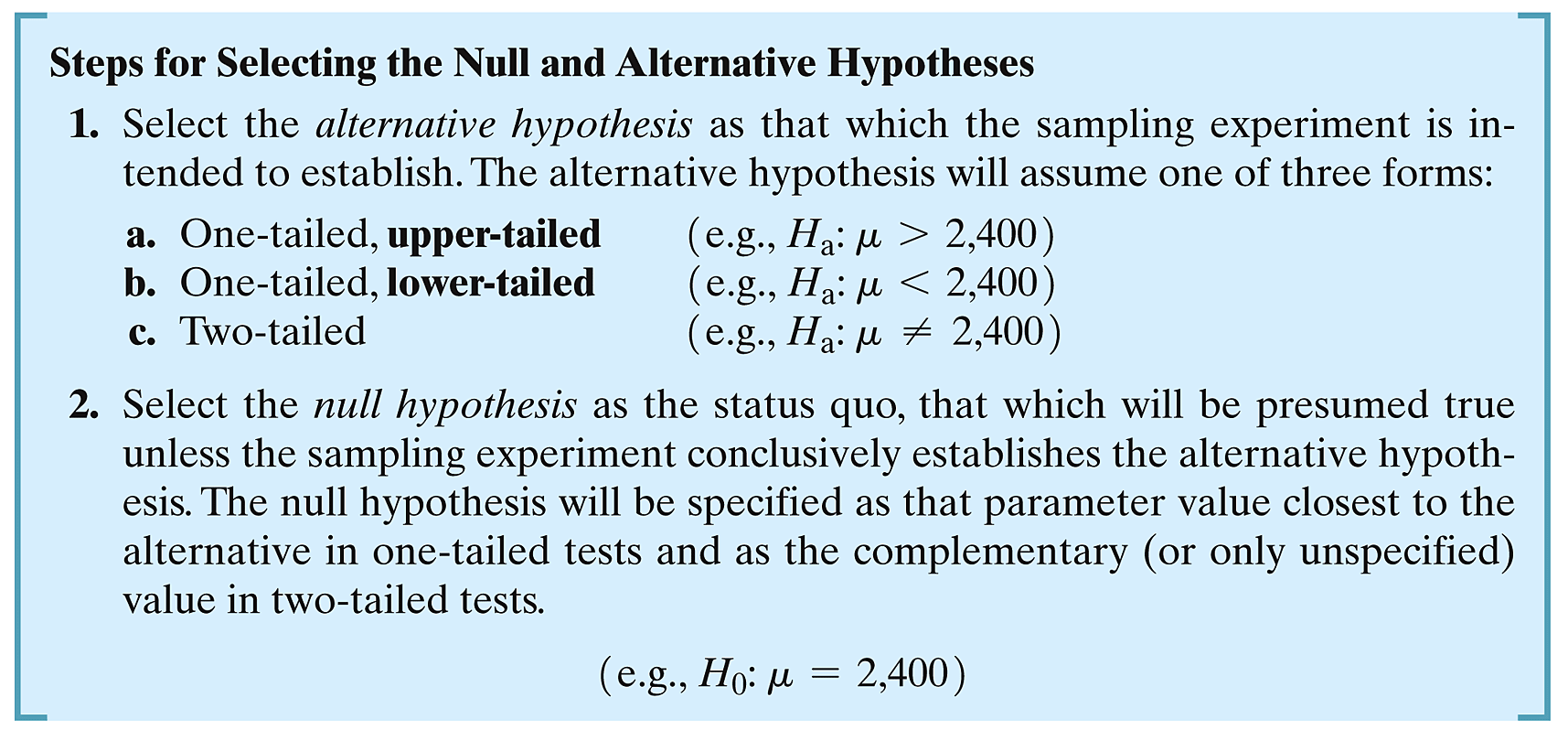Day 23
Math 216: Statistical Thinking
Bastola
Null and Allternate Hypotheses

Direction of Alternate Hypotheses



P-Value in Hypothesis Testing
What is a P-Value?
- The \(p\)-value quantifies the level of disagreement between the sample data and the null hypothesis (\(H_0\)).
- It is the probability, assuming \(H_0\) is true, of observing a test statistic as extreme as, or more extreme than, the statistic calculated from the sample data.
Statistical Significance
- A smaller \(p\)-value indicates stronger evidence against \(H_0\) and in support of the alternative hypothesis (\(H_a\)).
- Common thresholds for \(p\)-values are 0.05, 0.01, or 0.001, where a \(p\)-value less than these thresholds typically leads to rejecting \(H_0\).
Calculation of P-Value
- The \(p\)-value is calculated based on the distribution of the test statistic under the null hypothesis.
- For a right-tailed test, if \(z\) is the observed test statistic, \(p = P(Z \geq z | H_0)\).

